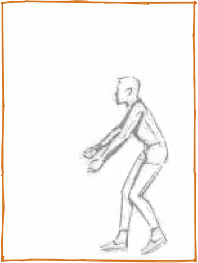

Rationale
According to the BC IRP grade 8s require: (a) certain levels of movement, (b) active living, and (c) personal/social responsibility to be successful as they move to the next level of Physical Education. TGfU enable all of the above by actively engaging learners to actually play games. Moreover, game movement is achieved through active participation in games. Active living is enhanced by acquiring game appreciation and by gaining knowledge of why and how we play games, which will spark interest and love for games, two components contingent on lifelong activity. As for personal and social responsibility, TGfU achieves both by engaging students in learner centered strategies such as peer learning, cognitive stimulation and modification to allow inclusion. These personal and social responsibilities are met because TGFU improves tactical knowledge and allows all students to be a successful participants without having to successfully perform motor skills (Griffin, et al. 1997). In short, by understanding tactical and spatial awareness students will be able to move accordingly and will be able to transfer this understanding to other games, within specific games categories.
The fundamental principle of TGfU is based in understanding the tactical complexity of games which allows more time to play, as opposed to a skill–based approach that fails all of the learning outcomes that the BC IRP lists and really only maintains the troubling trends of eroding participation, dislike of PE and overall dismay in the classroom.
TGfU emphasizes the combining of tactical awareness and skill execution to increase game performance (Hopper, 2007). Read, Respond, React and Recover are the four basic steps to teach students when looking at game play. Physical on-the-ball skill execution is indicative of Reaction and the other three incorporate off-the-ball movements that are essential in game play. According to Hopper (2007) games and game play can be divided into categories as sports are categorized according to their transferable and similar tactical complexity.
The present unit plan focuses on net/wall games and will facilitate the spatial and tactical knowledge necessary to excel in this category. As mentioned by Holt, Strean and Garcia Bengoechea (2002) the principle of modification-exaggeration can be used to explore net/wall game concepts through the use of a long, narrow court or a short, wide court and the use of grids consistent with the necessary space needed in the modified games.
By connecting different strategies for teaching, specifically the TGfU model, and the BC IRP for grade 8, we have made a comprehensive unit designed to enhance student understanding of game play in a way that is consistent with the curriculum. Our design includes modified game forms that address certain tactical issues present in net/wall games, specifically volleyball. These games emphasize the importance of spatial awareness, on-the-ball skills and off-the-ball movements in being successful. We also draw on more direct models of instruction to teach specific skills after they have already been introduced in a game form. This allows students to have experience with these skills, the forearm and overhead pass in this unit, both in the game form and outside of it, enhancing their understanding of it as a motor skill and also a game tactic. The unit is framed by two on two games of volleyball that will allow for more teacher assessment of if the student learning in this unit is consistent with the BC IRP.








